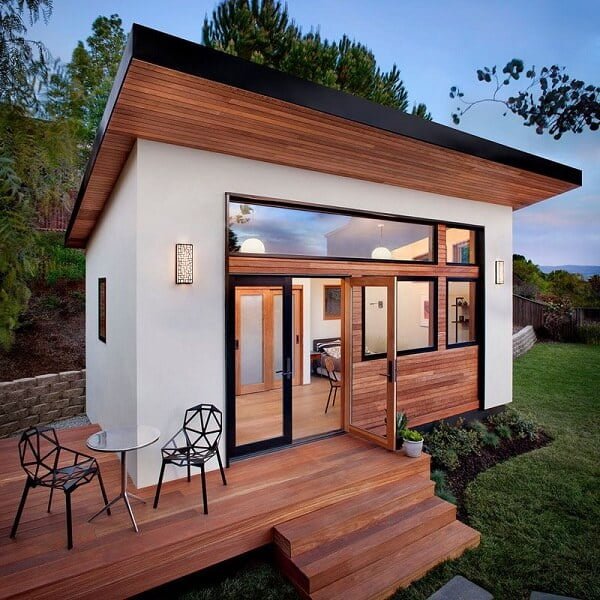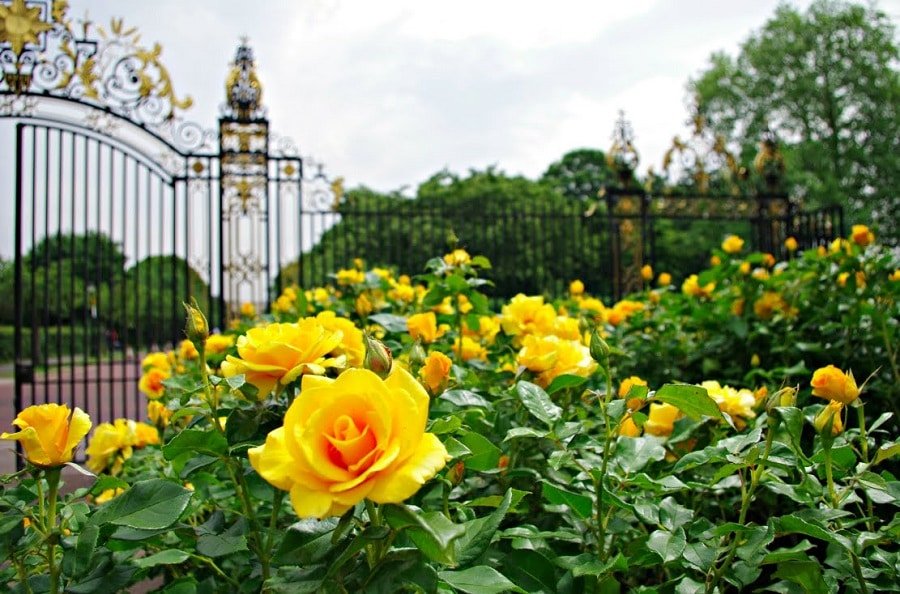When it comes to choosing the best ground cover for your yard, the decision often boils down to moss versus grass. Both options have their advantages and considerations, so it’s important to weigh the factors before making a choice.
Moss is a low-maintenance alternative to grass that can thrive in any climate and requires little upkeep. It doesn’t need to be mowed, fertilized, or heavily watered, making it an attractive option for those seeking a hassle-free yard. Moss lawns also have environmental benefits, providing a habitat for insects and birds, and they are more sustainable by saving water and reducing pollution from lawn mowers.
On the other hand, grass lawns offer a more traditional look and can withstand heavy foot traffic. They are well-suited for sunny areas and are generally less expensive to install. However, grass lawns require regular maintenance, including mowing, fertilizing, and watering, which can be time-consuming and costly.
Ultimately, the choice between moss and grass depends on your specific needs and preferences. Consider factors such as sunlight requirements, foot traffic tolerance, cost, and desired level of maintenance. By carefully evaluating these aspects, you can determine the best ground cover for your yard that aligns with your lifestyle and enhances the beauty of your outdoor space.
Key Takeaways
- Moss is a low-maintenance ground cover alternative to grass that can thrive in any climate and requires little upkeep.
- Choosing moss as ground cover offers several benefits, including environmental sustainability and providing a habitat for insects and birds.
- Considerations for choosing moss as a ground cover include sunlight requirements, foot traffic tolerance, and cost.
- There are various types of moss to choose from, each with its own sunlight and soil requirements.
- Establishing a moss lawn requires proper site preparation and planting techniques, ensuring the moss is planted in the right conditions for optimal growth.
The Benefits of Choosing Moss as Ground Cover
Moss lawns offer several advantages over traditional turfgrass lawns. When it comes to ground cover, moss requires minimal maintenance, making it an excellent choice for those seeking a low-maintenance landscaping solution. Unlike grass, moss lawns do not need to be mowed, fertilized, or heavily watered. This not only saves you time and effort but also reduces the use of resources such as water, fertilizers, and fuel for lawn mowers.
One of the key benefits of moss as ground cover is its ability to thrive in poor soil conditions. Unlike grass, which may struggle in compacted or nutrient-deficient soils, moss can grow easily in such areas. This makes moss an ideal choice for yards with challenging soil conditions, such as those with high clay content or areas where other plants struggle to establish.
Additionally, moss lawns contribute to the sustainability of your landscape. Moss is a natural ground cover that helps conserve water, as it requires less irrigation compared to grass. It also acts as a natural habitat for insects and birds, providing a sustainable and biodiverse environment in your yard. By choosing moss as ground cover, you are creating a wildlife-friendly space that supports the preservation of local ecosystems.
Another environmental benefit of moss lawns is their ability to provide erosion control on slopes. With their dense growth habit and strong root systems, mosses help prevent soil erosion by stabilizing the slopes and reducing runoff during heavy rainfall.
Overall, the benefits of choosing moss as ground cover are numerous. From its low-maintenance requirements and ability to thrive in poor soil conditions to its sustainability and wildlife habitat benefits, moss lawns offer a beautiful and eco-friendly alternative to traditional grass lawns.
Considerations for Choosing Moss as a Ground Cover
While moss lawns have numerous benefits, there are some considerations to keep in mind when choosing moss as a ground cover for your yard.
Firstly, it’s important to understand that most moss species prefer shade. This means that finding a variety of moss that performs well in sunny areas can be challenging. However, there are some moss species that are more tolerant of sunlight, so it’s not impossible to have a moss lawn in a sunny location.
Secondly, moss can tolerate light foot traffic, but it is not recommended for high-traffic areas. If you have children or pets who frequently play in your yard, a moss lawn may not be the best option. However, for areas with minimal foot traffic, moss can create a beautiful and soft ground cover.
Finally, cost is another consideration when choosing moss as a ground cover. Moss lawns can be more expensive to install compared to traditional grass lawns. This is mainly due to the cost of live moss and the initial site preparation required. However, it’s worth noting that moss lawns are low-maintenance and can save you money in the long run in terms of reduced water usage and less need for mowing, fertilizing, and other lawn care expenses.
When considering moss as a ground cover, take into account the specific conditions and needs of your yard. If you have a shady area with minimal foot traffic and are willing to invest in the initial installation costs, a moss lawn can be a beautiful and sustainable choice for your outdoor space.
In the next section, we will explore the different types of moss that can be used for lawns.
Types of Moss for Your Lawn
If you’re considering using moss as ground cover for your lawn, it’s important to understand the different types of moss available and their specific requirements. Each variety of moss has its own tolerance for sunlight and foot traffic, making it suitable for different areas of your yard. By choosing a moss variety native to your region, you can increase the chances of success in your climate.
Here are some popular moss varieties that are commonly used for lawns:
- Feather Moss: Feather moss (Bryum spp.) is a common moss variety known for its delicate, feathery appearance. It prefers shady areas with moist soil and is tolerant of light foot traffic.
- Pincushion Moss: Pincushion moss (Leucobryum spp.) gets its name from the small, cushion-like structures it forms. It thrives in moist, shaded locations and can handle moderate foot traffic.
- Mood Moss: Mood moss (Dicranum spp.) is a lush, dense moss variety that thrives in shaded areas with consistently moist soil. It has moderate tolerance to foot traffic.
- Fern Moss: Fern moss (Thuidium spp.) is a robust moss variety that forms dense, fern-like mats. It tolerates a range of light conditions, from partial shade to full sun, and can handle light foot traffic.
When selecting the right moss variety for your lawn, it’s important to consider the amount of sunlight and foot traffic the area receives. Some mosses are more shade-tolerant and prefer moist, shaded conditions, while others can tolerate more sunlight.
Remember to choose a moss variety that is native to your region, as it will be better adapted to the local climate and environmental conditions. This increases the likelihood of successful establishment and maintenance of your moss lawn.
How to Establish a Moss Lawn
Establishing a moss lawn requires proper site preparation and planting techniques. Follow these steps to create a beautiful and sustainable moss lawn in your yard:
- Start by assessing the soil pH in your desired planting area. Moss prefers acidic soil with a pH of 5.0 to 5.5. If your soil is not within this range, soil amendment may be necessary to lower the pH. You can find pH testing kits at your local garden center.
- Clear the area of any existing plants, grass, or debris. This will create a clean and suitable surface for the moss to grow. Use a rake or a garden hoe to remove any unwanted vegetation.
- Level the soil to ensure an even surface for the moss to spread. Use a rake or a garden roller to smooth out any bumps or unevenness.
- Choose the type of moss you would like to establish in your lawn. There are various moss varieties available, each with its own sunlight and soil requirements. Research the different moss species native to your region for best results.
- Planting techniques will depend on the type of moss you choose. You can purchase live moss from a reputable supplier, or you can propagate moss slurry by blending moss and water together. Spread the moss evenly over the prepared soil.
- Water the planting area thoroughly to help the moss establish. Moss requires consistently moist conditions for the first few weeks. Ensure the moss is evenly moist but not waterlogged to prevent rotting.
By following these site preparation and planting techniques, you can successfully establish a moss lawn in your yard. Remember to choose the right moss species for your region and provide the necessary care to help it thrive. A moss lawn offers a unique and low-maintenance alternative to traditional grass, creating a beautiful and environmentally friendly ground cover for your outdoor space.
Moss Lawn Care and Maintenance
Once you have established your moss lawn, you’ll be pleased to know that it requires minimal care and maintenance. Moss is a resilient and self-sustaining ground cover that doesn’t need regular watering due to its ability to absorb moisture from the air. During hot and dry periods, however, it’s important to provide supplemental watering to prevent the moss from drying out.
Moss lawns can tolerate light foot traffic, making them suitable for areas where people may occasionally walk. However, in heavily used areas, it is recommended to install stepping stones or paths to protect the moss and ensure its longevity.
Weeds can occasionally invade your moss lawn, so it’s essential to remove them as soon as they appear. Regularly inspect your lawn and pull out any unwelcome plants to maintain the pristine appearance of your moss lawn. Additionally, fallen leaves and debris should be cleared promptly to prevent potential moss damage and maintain the overall health of your moss garden.
By following these simple moss lawn care and maintenance practices, you can continue to enjoy the beauty and benefits of your moss lawn for years to come. With its low maintenance requirements and environmental advantages, moss is an excellent choice for creating a lush and sustainable ground cover in your yard.
Conclusion
Choosing between moss and grass for your yard’s ground cover ultimately depends on your priorities and the specific needs of your outdoor space. However, if you’re looking for a low-maintenance landscaping option that offers numerous benefits, moss lawns can be an excellent choice.
Unlike traditional grass lawns, moss lawns require minimal upkeep, saving you time and effort. With no need for mowing, fertilizing, or heavily watering, you’ll have more leisure to enjoy your yard without the hassle of lawn maintenance.
In addition to being low-maintenance, moss lawns also provide environmental advantages. They contribute to sustainability by reducing water usage and eliminating the pollution associated with lawn mowers. Moss lawns even create a natural habitat for insects and birds, supporting wildlife in your yard.
Not only do moss lawns offer practical benefits, but they also have aesthetic appeal. The lush and vibrant green color of moss can create a unique and eye-catching look for your outdoor space.
Consider the specific needs and conditions of your property when deciding between moss and grass. While moss lawns may not be suitable for sunny or high-traffic areas and can be more expensive to install, their low-maintenance nature and environmental benefits make them an attractive option for those looking to create a sustainable and visually appealing landscape.
Which is better for lawn care, moss or grass as ground cover?
When it comes to the best lawn care choices, the debate between moss and grass as ground cover continues. Moss requires less maintenance and thrives in shaded areas, while grass is more durable and provides a lush, green look. Ultimately, the decision depends on the specific needs and conditions of the lawn.
FAQ
What are the benefits of choosing moss as ground cover?
Moss lawns offer several advantages over traditional turfgrass lawns. They require little maintenance, no mowing or fertilizing, and can thrive in poor soil conditions. Moss also acts as a natural habitat for insects and birds, making it beneficial for wildlife. Additionally, moss can provide erosion control on slopes and is more sustainable, as it saves water and reduces pollution from lawn mowers.
What considerations should I keep in mind when choosing moss as a ground cover?
While moss lawns have numerous benefits, there are some considerations to keep in mind. Most moss species prefer shade, so finding a variety that performs well in sunny areas can be challenging. Moss can tolerate light foot traffic but is not recommended for high-traffic areas. Additionally, moss lawns can be more expensive to install than traditional grass lawns due to the cost of live moss and initial site preparation.
What are the different types of moss that can be used for lawns?
There are various types of moss that can be used for lawns, each with its own sunlight and soil requirements. Some popular moss varieties include feather moss, pincushion moss, mood moss, and fern moss. These mosses have different tolerances for sunlight and foot traffic, making them suitable for different areas of your yard. Choosing a moss variety native to your region can help ensure its success in your climate.
How do I establish a moss lawn?
Establishing a moss lawn requires proper site preparation and planting techniques. Moss prefers acidic soil with a pH of 5.0 to 5.5, so soil amendment may be necessary to lower the pH. Clear the area of any existing plants and debris, then level and rake the soil. Moss can be planted either by purchasing live moss or by propagating moss slurry. Water the planting area thoroughly and keep it consistently moist for the first few weeks to help the moss establish.
How do I care for and maintain a moss lawn?
Once a moss lawn is established, it requires minimal care and maintenance. Moss does not need regular watering, as it can absorb moisture from the air. However, during hot dry periods, it may need supplemental watering to prevent it from drying out. Moss lawns can tolerate light foot traffic but may require stepping stones or paths in heavily used areas. Weeds should be removed as needed, and fallen leaves and debris should be cleared to prevent moss damage.
Is moss a good alternative to grass for low-maintenance landscaping?
Moss can be a great alternative to grass for low-maintenance landscaping. With its minimal upkeep requirements, environmental benefits, and aesthetic appeal, moss lawns offer a unique and sustainable option for ground cover in your yard. Consider the specific needs and conditions of your property when deciding whether moss or grass is the best choice for your outdoor space.











